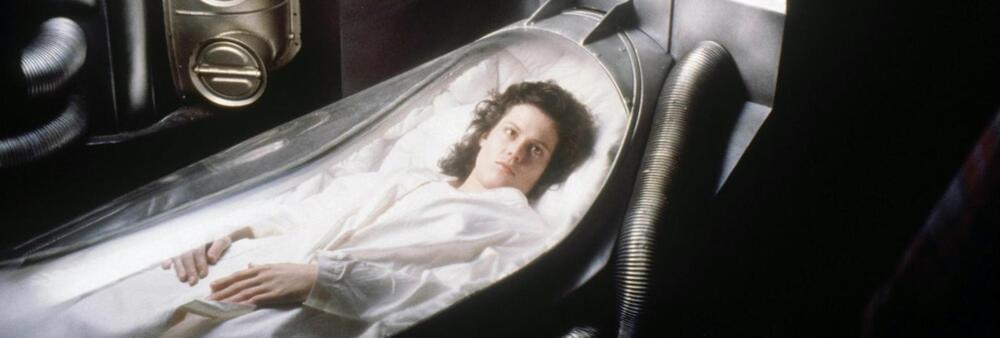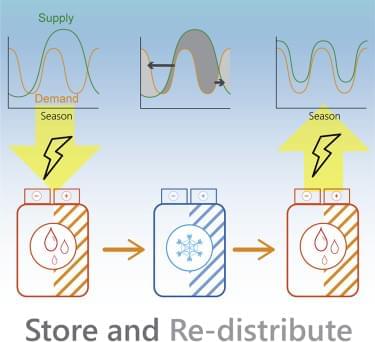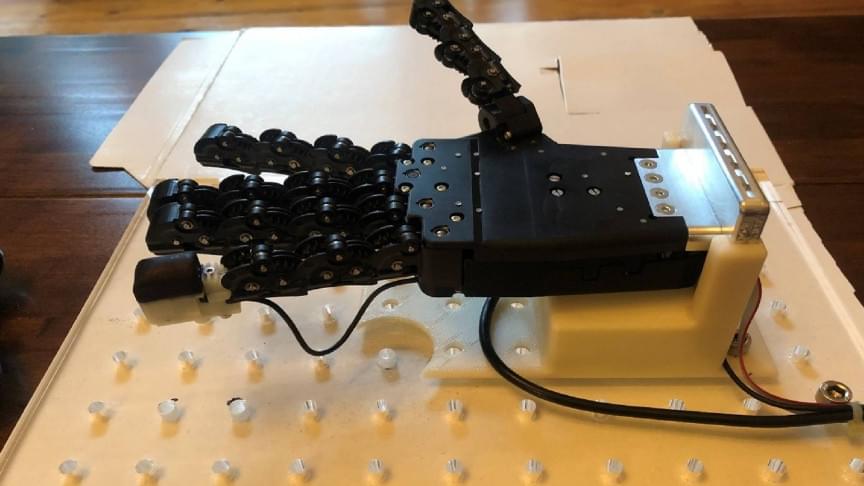The UK team used a technique developed by Nobel Award winner Shinya Yamanaka, who turned “normal” cells into stem cells back in 2006.
The bicycle, reinvented.
Designer Stephen Henrich is prototyping an all-wheel bicycle that looks like an infinity symbol.
Scientists at the US Department of Energy have created a low-cost molten salt battery that can store energy for months — potentially giving us a way to store and use energy from renewables year round.
The challenge: To stop climate change, we need to transition toward cleaner sources of energy.
Renewable energy (especially wind and solar) has become increasingly cheap to generate over the last couple decades, but storage is still an issue — we can burn as much coal or gas as we want, whenever we need it, but we can’t force the wind to blow.
Dr. Karen Miga, a co-lead of the T2T consortium and professor at the University of California, Santa Cruz, told Medical News Today, “The availability of a complete genome sequence will advance our understanding of the most difficult-to-sequence and repeat-rich parts of the human genome.”
“In the future, when someone has their genome sequenced, researchers and clinicians will be able to identify all of the variants in their DNA and use that information to better guide their healthcare. Knowing the complete sequence of the human genome will provide a comprehensive framework for scientists to study human genomic variation, disease, and evolution.”
In a new trial conducted by the University of Cambridge, scientists were successfully able to de-age human skin cells by 30 years.
With age, the ability of cells to function properly declines. As a result, the NDA blueprint of people starts to accumulate signs of aging.
Researchers have used regenerative biology to create ‘’induced’’ stem cells and produce fibroblasts that generates collagens that heal wounds and provide structure to tissues.
It relies on a new “freeze-thaw” design. A recent study has just been published by U.S. scientists who have managed to develop an aluminum-nickel molten salt battery that can retain over 90% of its initial capacity over a period of up to 12 weeks. Having an energy density of 260 W/hour per kg, the new battery was built with an aluminum anode and a nickel cathode, immersed in a molten-salt electrolyte.
The breakthrough could have many applications in soft robotics including in the Metaverse.
The researchers were inspired by actual skin. Researchers have been working on robot dexterity for several years now trying to give the machines human-like sensitivity. This has been no easy task as even the most advanced machines struggle with this concept.
Now the team is working on making the artificial fingertip as sensitive to fine detail as the real thing. Currently, the 3D-printed skin is thicker than real skin which may be hindering this process. As such, Lepora’s team is now working on 3D-printing structures on the microscopic scale of human skin.
“Our aim is to make artificial skin as good – or even better — than real skin,” concluded Professor Lepora. The end result could have many applications in soft robotics including in the Metaverse.
The discovery changes our understanding of everything. The world of physics may have been turned on its head.
“While this is an intriguing result, the measurement needs to be confirmed by another experiment before it can be interpreted fully,” said Fermilab Deputy Director Joe Lykken.
The W boson is a messenger particle of the weak nuclear force. It is responsible for the nuclear processes that make the sun shine and particles decay. Using high-energy particle collisions produced by the Tevatron collider at Fermilab, the CDF collaboration collected huge amounts of data containing W bosons from 1985 to 2011.
CDF physicist Chris Hays of the University of Oxford said, “The CDF measurement was performed over the course of many years, with the measured value hidden from the analyzers until the procedures were fully scrutinized. When we uncovered the value, it was a surprise.”
A team of researchers have found a way to “time jump” cells back 30 years. A team of researchers at the Babraham Institute, a partner organization of the University of Cambridge, UK, have made a breakthrough in regenerative medicine. Just published in the journal eLife, the team shows how they managed to turn back the clock 30 years for human skin cells.
A new regenerative medicine technique has been developed that can make old human cells 30 years younger without losing specialization.









